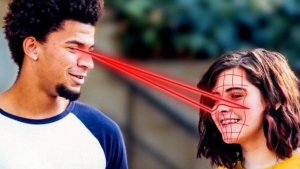9 techniques from a former FBI agent on how to read people quickly
Reading beyond appearances is a gift many people dream of having. This makes it possible to not be fooled and to place our trust in good hands.

LaRae Quy was an FBI agent for 23 years. She says that you don’t have to be a great detective to read someone at first glance. You just have to be able to interpret many signals that never lie. It’s all about knowing them.
But exactly what are the signs? Here are nine tips from the former FBI agent.
1. Define the basic behavioral model
Gestural communication speaks for itself. For example, many people do not look the other person in the eyes while talking to them; during a discussion, some cross their arms, cough, scratch their heads, or jiggle their feet, etc.
These various behaviors mean something. By analyzing the basic behavior of each individual, you will then be able to identify their intentions. Are they honest, deceitful, immature?
2. Watch for aberrations
Distinguish the differences between an individual’s normal gestures and the basic model.
For example, does one of your loved ones have a habit of clearing his throat when he’s nervous? Can you figure out what he’s hiding behind each gesture?
3. Watch for clusters of gestures
Don’t look for meaning behind everything. A simple gesture or word doesn’t necessarily have a hidden connotation. On the other hand, when gestures tend to repeat themselves according to a specific pattern, pay attention to them.
Here’s a little example: the person you’re talking to touches his head several times while speaking to you. Then he scratches his head and moves his feet at the same time. This is an indicator.
4. Compare behaviors
Also, if the person you’re talking to acts strangely, be attentive. How does this person interact with others (in the same way or differently than with you), does his facial expression change? What about his body language?
5. Look in the “mirror”
Logically, a person’s smile will activate your own facial muscles, causing a happy facial expression. Frowning, on the other hand, can show a lack of understanding or dissatisfaction.
While looking at a person we like, our facial muscles are relaxed. If the other person’s face is not receptive, other muscles will contract, thus sending you a signal of discontent.
6. Identify the strong voice
The strongest person is not always the one who sits at the head of the table. Similarly, an autonomous person, as a rule, has a strong voice (but not necessarily a loud one).
Often, the group leader doesn’t dominate: he depends on others, because he knows that he would be nothing without them. In a group of people, know how to determine who has the strongest voice in order to find the leader.
7. Notice how people move
Most of the time, people are supposed to have fluid and automatic movements. If a person looks down at his feet while walking instead of holding his head high, this indicates a lack of self-confidence.
If you notice this with one of your co-workers, for example, don’t hesitate to boost their self-confidence with a little praise. Similarly, you can bring up the “elephant in the room" by asking embarrassing questions to help them come out of their shell.
8. Use of action words (verbs)
You can also use action verbs to read a person.
For example, if your boss tells you that he "decided to go with brand X", the word "decide" may indicate that your boss is: a) not impulsive, b) weighed the pros and cons, and (c) has an action plan to follow.
9. Identify the fundamentals
Although we are all unique, there are some clarifications that help you relate to another person and read them accurately. Depending on the actions and what the other person lets on, it’s possible to determine:
-If the person is an introvert or extrovert
-If interactions with others are a starting point for their actions
-If the person knows how to handle risks and uncertainty
-What feeds their ego
-How they deal with stress
-What their behaviors are when they are relaxed
It takes practice to read body language accurately, and of course, it’s not an exact science. Nevertheless, by using these tips as a starting point, you’ll improve your observation skills and read people better. As a result, your communication will be more effective.
Source: laraequy.com

By Straker Julia
Writer
Passionate about writing, I write articles on the subjects that I love. Creativity and Animals themes are my favorites!


